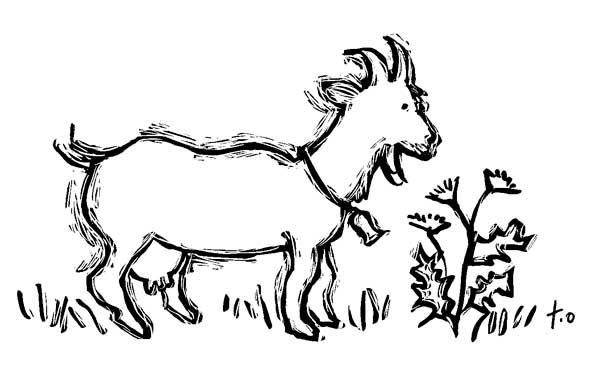 |
| Toki Oshima drawing |
By Jacki Perkins
I’ve received a few questions this summer about the effects of poisonous pasture plants on livestock. Here are my responses, along with a reference to a longer article on the subject in The Maine Organic Farmer & Gardener.
Q: How much should I worry about my livestock eating poisonous plants present in my pastures?
A: Generally, with enough palatable fodder, animals tend to avoid hazardous plants. Goats tend to be the exception and will nibble all sorts of things.
Q: What can I do to manage undesirable plants in my pastures?
A: Good grazing practices that avoid grazing too low or too often paired with timely clipping to avoid weeds reseeding themselves will help outcompete undesirable plants. Given enough of a budget, seeding a variety of perennial grasses and some annuals can help worn-out pastures.
Q: What symptoms should I watch for in a case of poisoning?
A: Generally native Maine plants pose a risk of bloat, which isn’t immediately fatal. What can be fatal are ornamental and garden plants. These can cause neurological symptoms such as stumbling and trembling. Some plants such as cherry trees contain cyanide and are immediately fatal with enough quantity and concentration. A smell of almonds is present with cyanide poisoning. If you suspect poisoning, call your veterinarian.
For more information: “Poisonous Plants in Pastures” by Diane Schivera in the summer 2011 issue of The Maine Organic Farmer & Gardener.
Jacki M. Perkins is MOFGA’s organic dairy and livestock specialist. You can contact her at [email protected] or 802-595-9866.

